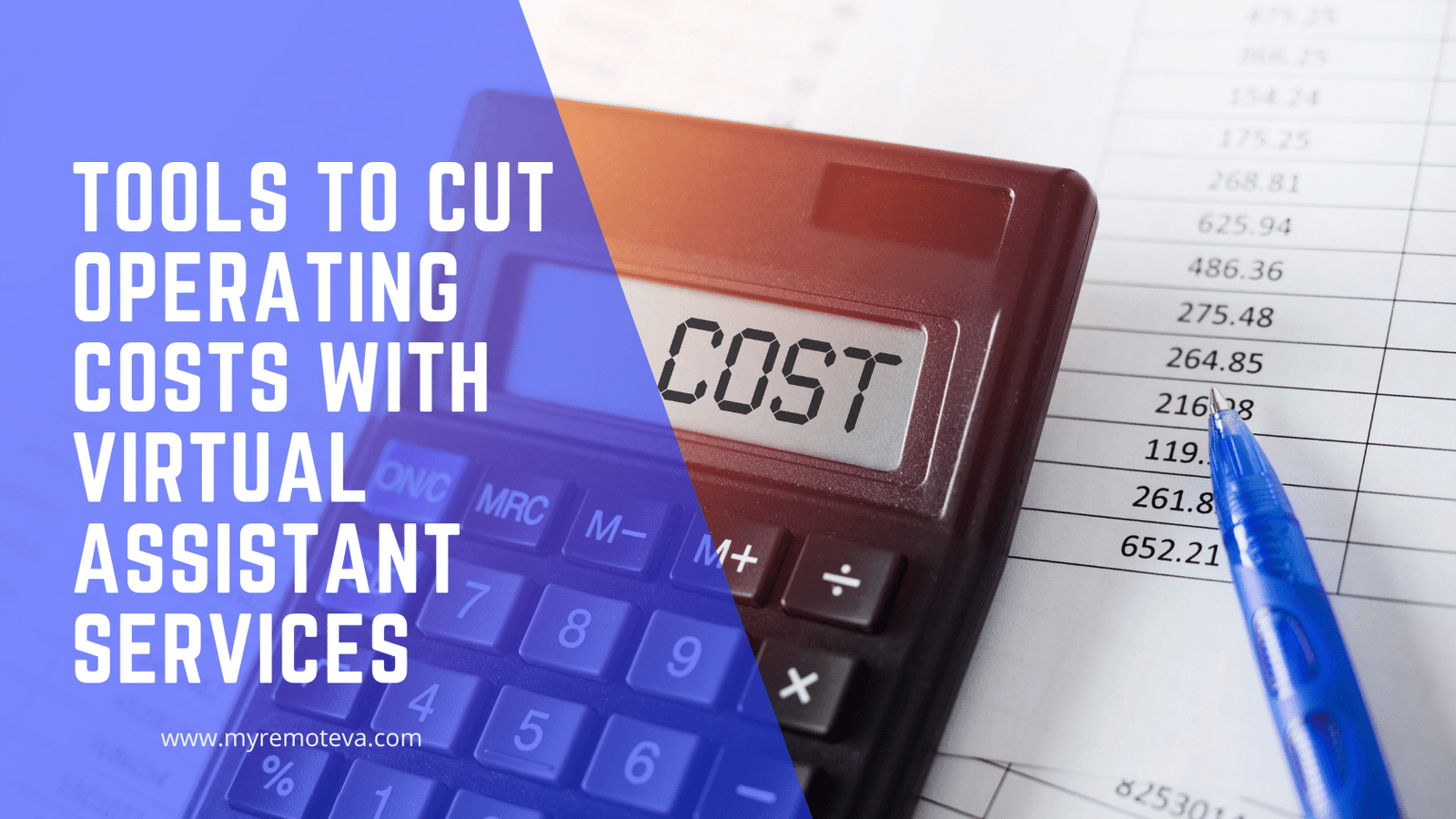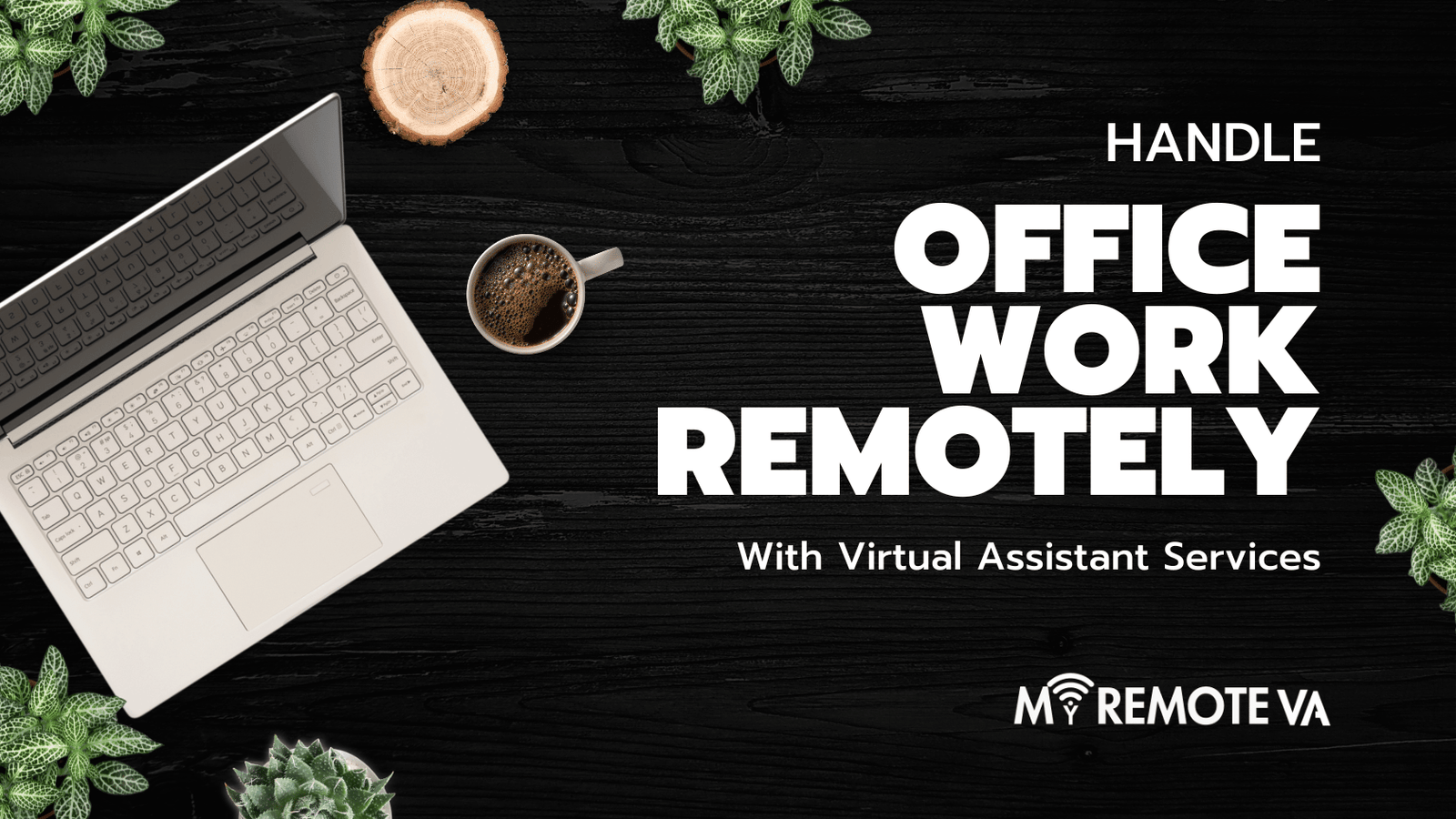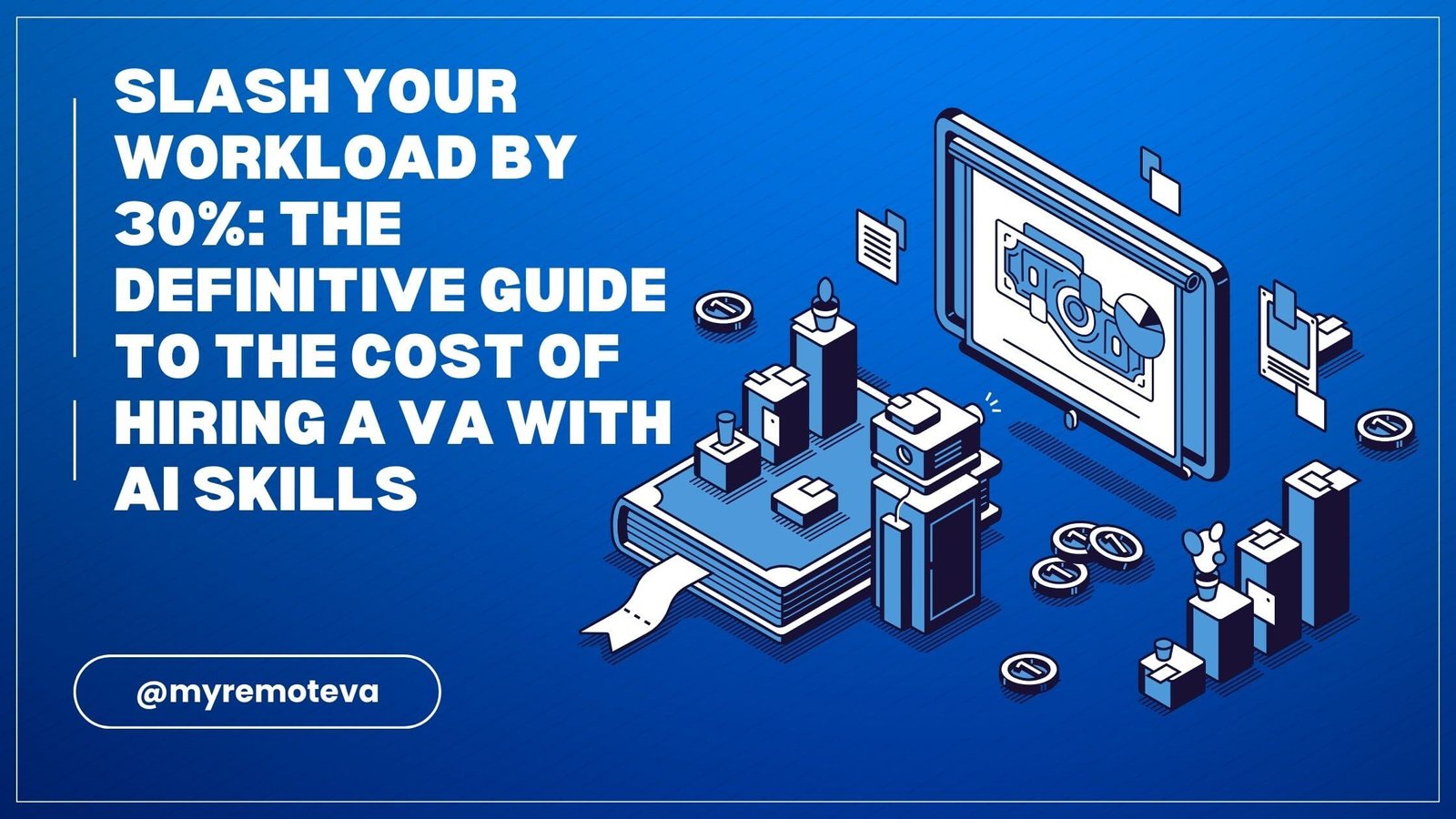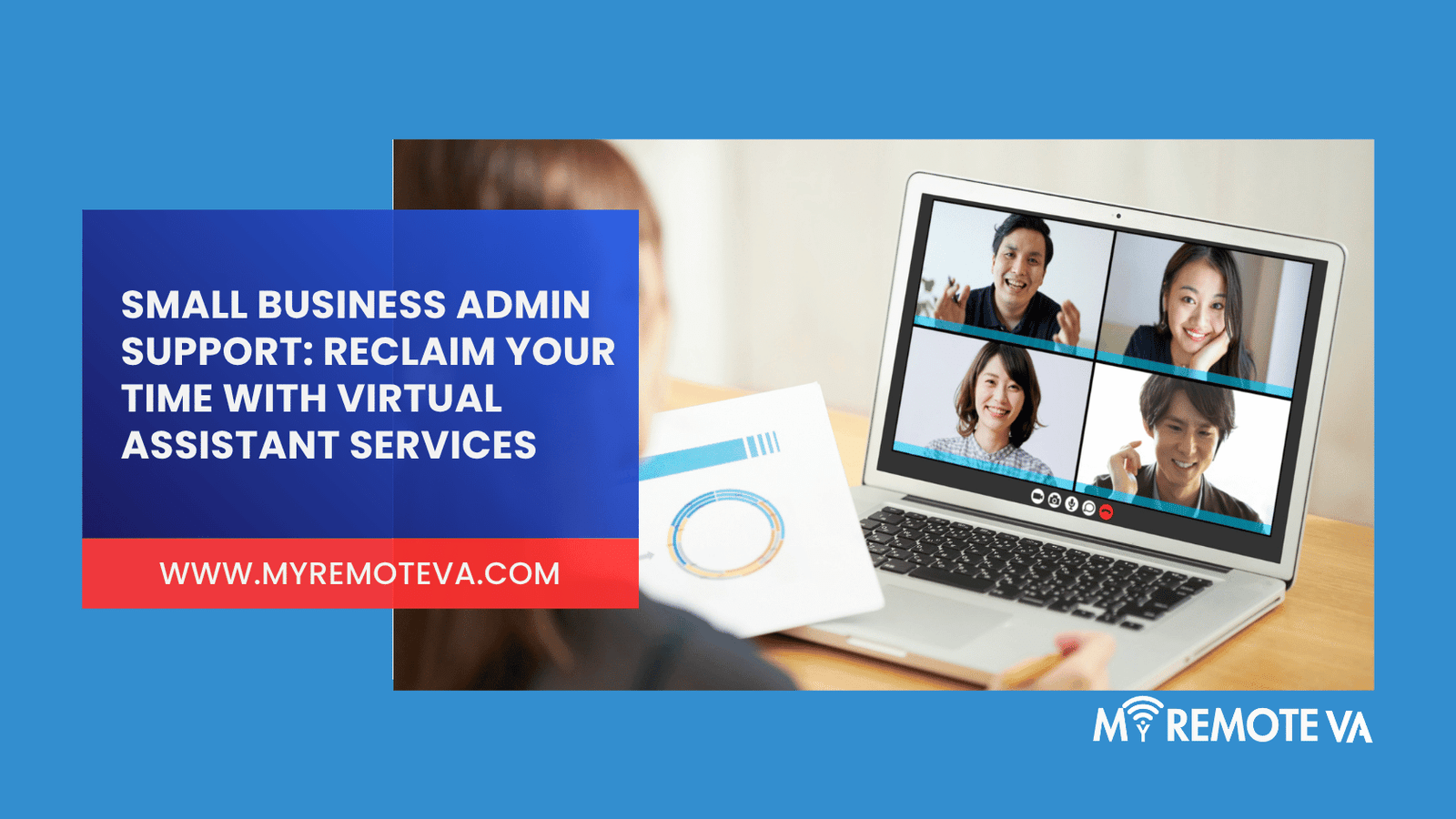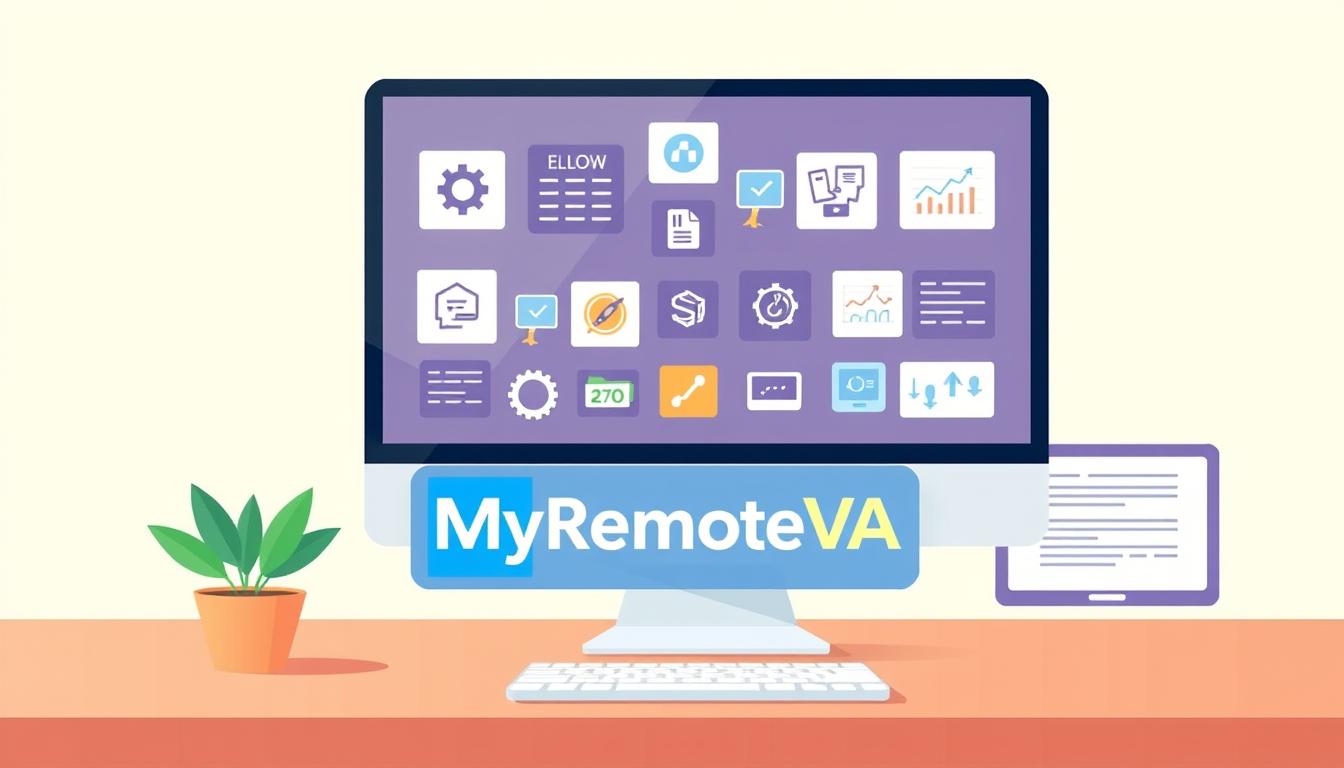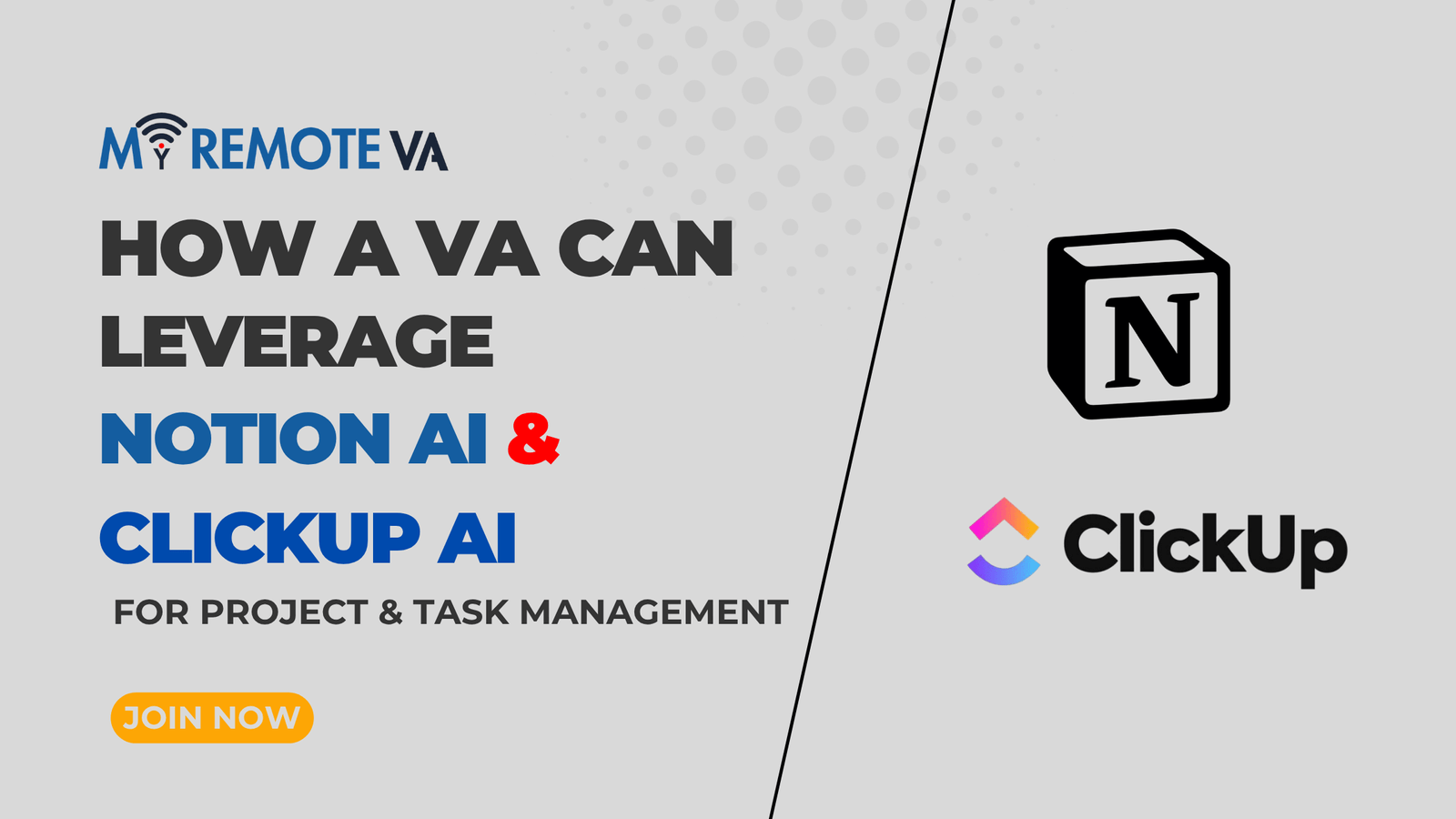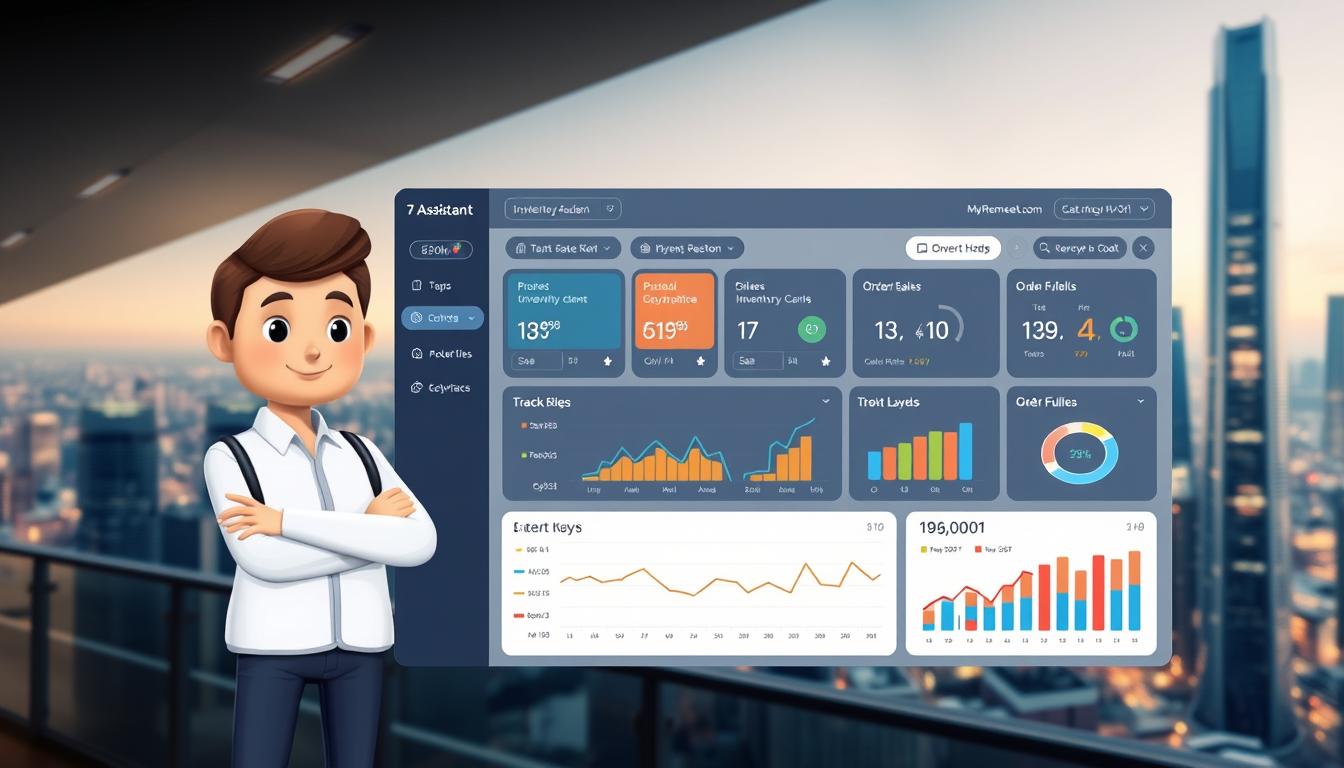Tools to Cut Operating Costs with Virtual Assistant Services
Virtual assistant services offer a powerful suite of tools to significantly reduce your operating costs. By strategically delegating tasks, you can free up valuable time for core business activities and avoid the expenses associated with hiring full-time employees.
- Tools to Cut Operating Costs with Virtual Assistant Services
- Introduction: Streamlining Operations with Virtual Assistants
- Identifying Areas for Cost Reduction with Virtual Assistant Support
- Top Tools and Strategies for Cost-Effective VA Management
- Recent Market Signals (USA, UK, New Zealand, Singapore, Australia, UAE - Last Month)
- Tips for Effective Virtual Assistant Management: Maximizing Your ROI
- Measuring the ROI of Virtual Assistant Services
- FAQ: Frequently Asked Questions - Tools to Cut Operating Costs
- Conclusion: Optimizing Your Business with Strategic Virtual Assistant Use
Leveraging Virtual Assistants for Cost-Effective Task Management
The core benefit of using a virtual assistant lies in its ability to handle a wide range of tasks, from administrative duties and customer support to marketing and creative projects. This eliminates the need for multiple specialized hires, thereby reducing salaries, benefits, and associated overhead costs.
Consider these areas where virtual assistants can directly impact your bottom line:
- Reduced Hiring Costs: Avoid recruitment fees, onboarding expenses, and training costs.
- Lower Overhead: Eliminate the need for office space, equipment, and supplies.
- Increased Productivity: Free up your team to focus on revenue-generating activities.
- Flexible Scaling: Easily adjust your support based on fluctuating workloads, paying only for the hours you need.
Data-Backed Insights: The ROI of Virtual Assistance
Studies have shown that businesses utilizing virtual assistants can experience significant cost savings. For example, companies have reported saving up to 78% on operating costs by outsourcing specific tasks to virtual assistants . Furthermore, the increased productivity and focus on core competencies can lead to increased revenue generation .
Choosing the right virtual assistant service is crucial. Options like hourly, monthly plans, or dedicated team plans, offering varying levels of support and flexibility, allow you to tailor the service to your specific needs and budget.
For example, starting with a few hours a week for administrative tasks can free up significant time for a business owner. As the business grows, more hours or a dedicated assistant can be engaged to handle increasing workloads, without the long-term commitment of a full-time employee.
Introduction: Streamlining Operations with Virtual Assistants
In today’s competitive business landscape, finding effective tools to cut operating costs is crucial for sustainable growth and profitability. One powerful solution gaining traction is leveraging virtual assistant (VA) services. By strategically delegating tasks to skilled virtual assistants, businesses can significantly reduce overhead expenses while maintaining—or even improving—efficiency and productivity.
Many businesses, from startups to established enterprises, struggle with the ever-increasing costs associated with traditional employment, including salaries, benefits, office space, and equipment. These expenses can strain budgets and limit resources available for core business activities.
How Virtual Assistants Help Cut Costs
Virtual assistants offer a cost-effective alternative by providing access to specialized skills and expertise on an as-needed basis. This eliminates the need for full-time employees for tasks that don’t require constant attention, allowing you to pay only for the time and services you actually utilize.
Consider the time spent on administrative tasks, customer support, marketing initiatives, or even technical maintenance. These activities, while essential, can often divert valuable resources and attention away from strategic priorities. Delegating these tasks to virtual assistants frees up your team to focus on core competencies, innovation, and revenue generation.
Beyond reduced salary and benefits costs, utilizing virtual assistants can also lower expenses related to office space, equipment, and training. Because they operate remotely, VAs provide their own equipment and workspace, eliminating these costs for your business. This can translate to substantial savings, especially for businesses operating in high-cost locations.
Expert virtual assistant support is available for startups, founders, agencies, and busy professionals through flexible hourly and team-based plans. You can delegate admin, tech, customer support, marketing, creative tasks, or executive work — and a Dedicated Supervisor manages your VA, shift, processes, and reporting so you don’t have to.
Identifying Areas for Cost Reduction with Virtual Assistant Support
Operating costs can significantly impact your bottom line. Before implementing any tools to cut costs, it’s crucial to pinpoint exactly where your money is going. Expert virtual assistant services can play a vital role in this identification process, providing the data and analysis needed to make informed decisions.
Areas Where Virtual Assistants Can Help Identify Cost Savings:
- Admin Tasks: Time spent on administrative duties often pulls you and your core team away from revenue-generating activities. Tracking the hours dedicated to tasks like scheduling, data entry, and email management can reveal significant cost savings potential.
- Customer Support: Analyzing customer support tickets and response times can highlight inefficiencies. A VA can help categorize issues, identify recurring problems, and suggest improvements to streamline support processes.
- Marketing & Creative Projects: Are your marketing efforts yielding the desired results? A VA can assist in tracking campaign performance, analyzing data, and identifying areas where resources are being wasted. They can also help optimize creative workflows, reducing production costs.
- Technical Tasks: Website maintenance, data analysis, and other technical tasks can be time-consuming and expensive if handled inefficiently. A VA with the right skills can help identify opportunities to automate processes, improve data accuracy, and reduce reliance on expensive software or consultants.
By delegating these tasks to a virtual assistant, you gain valuable insights into your operational expenses. This allows you to focus on strategic decision-making and implement targeted cost-reduction strategies.
How a Virtual Assistant Can Streamline Cost Identification:
- Data Collection and Analysis: VAs can gather and analyze data from various sources, providing a comprehensive overview of your spending habits.
- Reporting and Insights: They can create detailed reports that highlight areas of inefficiency and identify potential cost-saving opportunities.
- Process Optimization: Based on the data collected, VAs can suggest ways to streamline processes and eliminate unnecessary expenses.
For startups, founders, agencies, and busy professionals, identifying and addressing these areas of cost reduction is vital for sustainable growth and profitability. Leveraging expert virtual assistant support offers a flexible and cost-effective way to achieve these goals. With curated Hourly Monthly Plans of (5, 10, 20, 30 hours) or building a team with Dedicated Plans, for 80 hours, or for 160 hours, or multi-VA setups there is something for every business size and complexity.
Top Tools and Strategies for Cost-Effective VA Management
Virtual Assistants (VAs) can be a powerful tool to cut operating costs, but effective management is key to maximizing ROI. This section outlines some top tools and strategies to ensure your VA support remains cost-effective and efficient.
Communication & Collaboration
Clear and consistent communication is paramount. Utilizing tools that streamline communication and collaboration can significantly improve VA productivity and reduce errors. Consider these:
- Project Management Software: Platforms like Asana or Trello help organize tasks, track progress, and facilitate collaboration. This ensures VAs are focused on high-priority tasks and that deadlines are met, preventing wasted time.
- Communication Platforms: Slack or Microsoft Teams provide real-time communication channels, enabling quick problem-solving and efficient collaboration.
- Video Conferencing: Zoom or Google Meet facilitate face-to-face meetings, even remotely, fostering stronger relationships and clearer communication, especially for complex tasks.
Time Tracking & Productivity Monitoring
Understanding how your VA’s time is spent is crucial for optimizing efficiency. Time tracking and productivity monitoring tools can provide valuable insights:
- Time Tracking Software: Tools like Toggl Track or Clockify allow VAs to accurately track their time spent on various tasks. This data can be used to identify areas for improvement and ensure efficient allocation of resources.
- Task Management Systems with Built-in Reporting: Some project management tools offer detailed reporting features that track task completion rates, identify bottlenecks, and provide insights into VA performance.
Task Automation & Streamlining
Identifying repetitive tasks that can be automated can significantly reduce VA workload and free them up for more strategic responsibilities. Some potential automation tools include:
- Zapier or IFTTT: These platforms connect different apps and automate workflows, eliminating manual data entry and streamlining processes.
- Email Automation Tools: Tools like Mailchimp or ConvertKit can automate email marketing campaigns, freeing up VAs from manual email tasks.
- Social Media Scheduling Tools: Platforms like Buffer or Hootsuite allow VAs to schedule social media posts in advance, saving time and ensuring consistent online presence.
Strategic Delegation and Training
While tools are important, a strategic approach to delegation and training is equally crucial. Defining clear roles, providing adequate training, and offering ongoing support are essential for maximizing VA effectiveness and cost savings. Consider providing comprehensive training resources and documentation for frequently performed tasks. Also consider that some companies provide Dedicated Supervisor who manages your VA, shift, processes, and reporting so you don’t have to.
Recent Market Signals (USA, UK, New Zealand, Singapore, Australia, UAE – Last Month)
Businesses across the USA, UK, New Zealand, Singapore, Australia, and UAE are actively seeking tools to cut operating costs amidst economic uncertainty. The last month has seen a surge in interest in solutions that offer efficiency gains and reduced overhead.
Increased Demand for Virtual Assistance
One significant trend is the rising demand for virtual assistant services. Companies are recognizing the potential to offload administrative, technical, customer support, marketing, creative, and executive tasks to skilled virtual assistants, thereby reducing payroll costs and freeing up internal resources for strategic initiatives. This is a practical application of using tools to cut operating costs. Businesses looking to streamline operations are turning to virtual assistants to handle a variety of tasks without the commitment of full-time employment.
Focus on Flexible Staffing Solutions
There’s also a notable shift towards flexible staffing solutions. Businesses are moving away from rigid, fixed-cost models and exploring options that allow them to scale their workforce up or down as needed. Curated Hourly Monthly Plans (5, 10, 20, 30 hours) or team building through Dedicated Plans for 80 or 160 hours provide the ability to access support precisely when it is needed. This approach helps to optimize resource allocation and avoid unnecessary expenses during periods of lower demand.
Prioritizing Cost-Effective Technology
Beyond staffing, businesses are also investing in cost-effective technology solutions. This includes adopting cloud-based platforms, automation tools, and other technologies that streamline processes, reduce manual labor, and improve overall efficiency. These technologies can be viewed as tools to cut operating costs across departments.
Emphasis on ROI and Measurable Results
Finally, there’s a growing emphasis on demonstrating a clear return on investment (ROI) for any cost-cutting initiatives. Businesses are increasingly scrutinizing the impact of their spending and seeking solutions that deliver measurable results. This requires a focus on data-driven decision-making and a willingness to adapt strategies based on performance.
Tips for Effective Virtual Assistant Management: Maximizing Your ROI
Effectively managing your virtual assistant (VA) is crucial for realizing the full potential of this cost-saving strategy. By streamlining processes and communication, you can significantly amplify the value your VA provides, further contributing to reduced operating costs.
Clear Communication & Defined Expectations
Lay the groundwork for success by clearly outlining expectations from the outset. Define the scope of work, desired outcomes, and key performance indicators (KPIs). This ensures your VA understands their role and how it contributes to your overall goals. For instance, if delegating customer support, specify response time targets and resolution protocols.
Leveraging Tools for Seamless Collaboration
Utilize project management and communication tools to facilitate collaboration and track progress. Platforms like Asana, Trello, or Monday.com enable you to assign tasks, set deadlines, and monitor completion. Regular communication through channels like Slack or email keeps everyone informed and allows for quick resolution of any issues. Remember that clear documentation of workflows and standard operating procedures (SOPs) will ensure consistency and efficiency, especially as your business grows.
Prioritization and Task Delegation
Strategic task delegation is key to optimizing your VA’s time. Focus on delegating repetitive, time-consuming tasks that don’t require your direct expertise. This frees up your time to focus on higher-level strategic initiatives that drive revenue and growth. Prioritize tasks based on urgency and impact, ensuring your VA is always working on the most important items.
Regular Feedback and Performance Reviews
Provide consistent feedback to your VA, both positive and constructive. Regular performance reviews allow you to identify areas for improvement and reinforce positive behaviors. This not only enhances the VA’s performance but also strengthens your working relationship. Celebrate successes and recognize achievements to foster a motivated and engaged virtual assistant.
Understanding Different Virtual Assistant Models
When exploring Virtual Assistant Services, you may encounter options like dedicated plans or hourly models. Consider how these different approaches align with your specific needs and workflows. Understanding the nuances of these models will help you choose the plan that delivers the best return on your investment, ultimately contributing to those sought-after operating cost reductions.
Measuring the ROI of Virtual Assistant Services
One of the most important aspects of adopting any tool designed to cut operating costs is understanding its return on investment (ROI). Virtual Assistant (VA) services are no exception. While the cost savings of delegating tasks can be readily apparent, quantifying the true ROI requires a more nuanced approach.
Identifying Key Performance Indicators (KPIs)
Before engaging a VA, clearly define the KPIs that will be used to measure success. These might include:
- Time Saved: Track the number of hours you or your team spends on tasks now handled by the VA. Multiply this by your hourly rate to calculate the cost savings.
- Increased Revenue: Did delegating tasks free you up to focus on revenue-generating activities like sales, business development, or product innovation? Quantify the increase in revenue attributable to this shift.
- Improved Efficiency: Has the VA streamlined processes, reduced errors, or improved response times? Measure improvements in efficiency using relevant metrics (e.g., customer satisfaction scores, project completion rates).
- Reduced Overhead: Has the need for additional office space, equipment, or software licenses been reduced or avoided due to VA support? Quantify these savings.
- Employee Morale: While harder to quantify, freeing up employees from mundane tasks can lead to improved morale and productivity. Look for anecdotal evidence or conduct employee surveys.
Calculating Cost Savings
The most direct way to measure ROI is to calculate the cost savings achieved through VA services. For example, if you’re currently spending 10 hours per week on administrative tasks at a cost of $50/hour, and a VA can handle those tasks for $25/hour, you’re saving $250 per week, or $1,000 per month.
Beyond Direct Cost Savings
The ROI of a VA extends beyond simple cost savings. Consider the strategic value of freeing up your time to focus on core business functions. This can lead to:
- Faster Growth: Focus on strategic initiatives and scale operations more quickly.
- Improved Customer Service: Delegate customer support tasks to ensure prompt and helpful responses.
- Increased Innovation: Free up time for research and development and explore new opportunities.
Tracking and Reporting
Regularly track and report on your chosen KPIs to monitor the ROI of your VA services. This will allow you to make adjustments as needed to maximize efficiency and effectiveness. A Dedicated Supervisor managing VA shifts, processes, and reporting can be helpful in this regard.
FAQ: Frequently Asked Questions – Tools to Cut Operating Costs
How can a Virtual Assistant help me cut operating costs?
Virtual Assistants offer a powerful way to reduce operating expenses by optimizing resource allocation. Instead of hiring full-time employees with associated costs like salaries, benefits, and office space, you can leverage a VA for specific tasks and projects. This on-demand support reduces overhead and allows you to focus on core business activities.
What types of tasks can a Virtual Assistant handle to reduce costs?
A Virtual Assistant can handle a wide array of tasks that contribute to operating cost reduction, including:
- Administrative Tasks: Managing emails, scheduling appointments, data entry, and creating reports, freeing up your time and your employee’s time to focus on high-value activities.
- Customer Support: Handling customer inquiries, resolving issues, and providing support through various channels, which can be more cost-effective than hiring a dedicated in-house team.
- Marketing Support: Managing social media, creating content, running email campaigns, and conducting market research, helping you reach a wider audience without significant marketing agency fees.
- Technical Tasks: Website maintenance, troubleshooting technical issues, and providing IT support, potentially reducing reliance on expensive IT consultants.
- Creative Tasks: Designing graphics, creating presentations, and editing videos, which can be more affordable than hiring freelance designers or agencies.
How do Virtual Assistant plans work and how can they help me control spending?
Virtual Assistant services typically offer flexible plans designed to match your specific needs and budget. Options range from hourly packages to dedicated team setups. This allows you to scale your support up or down as required, avoiding the fixed costs associated with traditional employment. With curated Hourly Monthly Plans, you can pick the right amount of help based on the needs of the business. Options include 5, 10, 20, or 30 hours. You can also build a team with Dedicated Plans, for 80 hours, or for 160 hours, or multi-VA setups.
Is a Virtual Assistant only for large businesses?
Not at all! Virtual Assistants are highly beneficial for businesses of all sizes, from startups and small businesses to larger enterprises. For startups and founders, a VA can provide essential support during the crucial growth phase, freeing up time to focus on strategy and securing funding. For busy professionals, a VA can manage administrative tasks and personal errands, improving work-life balance. Even if you aren’t ready to commit yet, there is often a Forever Free Plan, which gives you 1 free hour every month with task support and rollover benefits.
How does a Dedicated Supervisor help me manage my VA and ensure cost-effectiveness?
Having a Dedicated Supervisor for your Virtual Assistant is a significant advantage. The Supervisor manages your VA, shift, processes, and reporting. This ensures that tasks are completed efficiently, processes are optimized, and you receive regular reports on progress. This level of management is aimed to maximize the value you receive from your VA services, ultimately contributing to cost savings.
Conclusion: Optimizing Your Business with Strategic Virtual Assistant Use
In today’s competitive business landscape, effectively managing and minimizing operating costs is crucial for long-term success. As explored, several tools and strategies can contribute to this goal, and one of the most impactful is the strategic implementation of virtual assistant services.
By delegating non-core tasks to skilled virtual assistants, businesses can free up valuable time and resources, allowing internal teams to focus on revenue-generating activities and strategic initiatives. This targeted approach not only boosts productivity but also directly reduces costs associated with hiring, training, and managing full-time employees.
Unlocking Efficiency Through Delegation
Virtual assistants can handle a wide range of tasks, streamlining operations and improving efficiency. This includes administrative duties, customer support, marketing assistance, and even technical tasks. The result is a more agile and cost-effective business model.
Flexible Solutions for Varying Needs
The best approach to leveraging virtual assistants often involves flexible service models tailored to specific needs. Instead of committing to a full-time employee, businesses can opt for hourly or project-based plans, ensuring they only pay for the assistance they require. These plans typically come in different tiers (5, 10, 20, 30 hours) or team setup with Dedicated Plans, for 80 hours, or for 160 hours, or multi-VA setups. These can include options like a free monthly plan as well.
Realizing Cost Savings and Improved Focus
Data consistently shows that outsourcing non-core functions leads to significant cost savings and improved overall business performance . The ability to scale resources up or down as needed provides a distinct advantage, allowing businesses to adapt quickly to changing market conditions and maintain a lean, efficient operation. The strategic use of virtual assistants isn’t just about cutting costs; it’s about optimizing your business for sustainable growth and long-term success.

